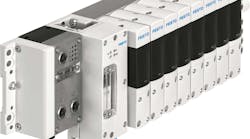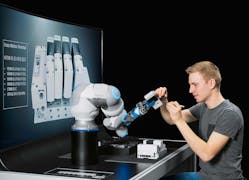At Hannover Fair this April, Festo will display three animal-inspired robots from its Bionic Learning Network, and three superconductor technologies that use magnetics for low-wear processing and cargo transfer. Festo will also showcase its most recent product—the Motion Terminal VTEM, which integrates piezo valves and control software into a streamlined package.
The Festo Motion Terminal's piezoelectric valves quickly adjust to commands sent by the user. They inherently consume less power because they react to small electric signals. The Motion Terminal includes embedded stroke and pressure sensors, in addition to control software that can be accessed through the Motion mobile apps. It is credited with replacing up to 50 parts because operators can quickly switch between 8 different air-flow settings.
The product is also highlighted for its role in Industry 4.0 with digital data monitoring and built-in leakage diagnostics that can be managed through the Motion apps. It is built to directly integrate with most existing components and systems used in factory and process automation.
The Motion app's “Selectable Pressure Level” function lets users quickly change air consumption based on the speed, strength, and position requirements of the application. The “ECO drive” function can be used to minimize compressed air flow when no holding forces are needed.
For more information about Festo's Bionic displays, and how to integrate the Motion Terminal in existing pneumatic automated processes, visit Festo in Hall 15, Stand D11 at Hannover Fair April 24 to 28.


